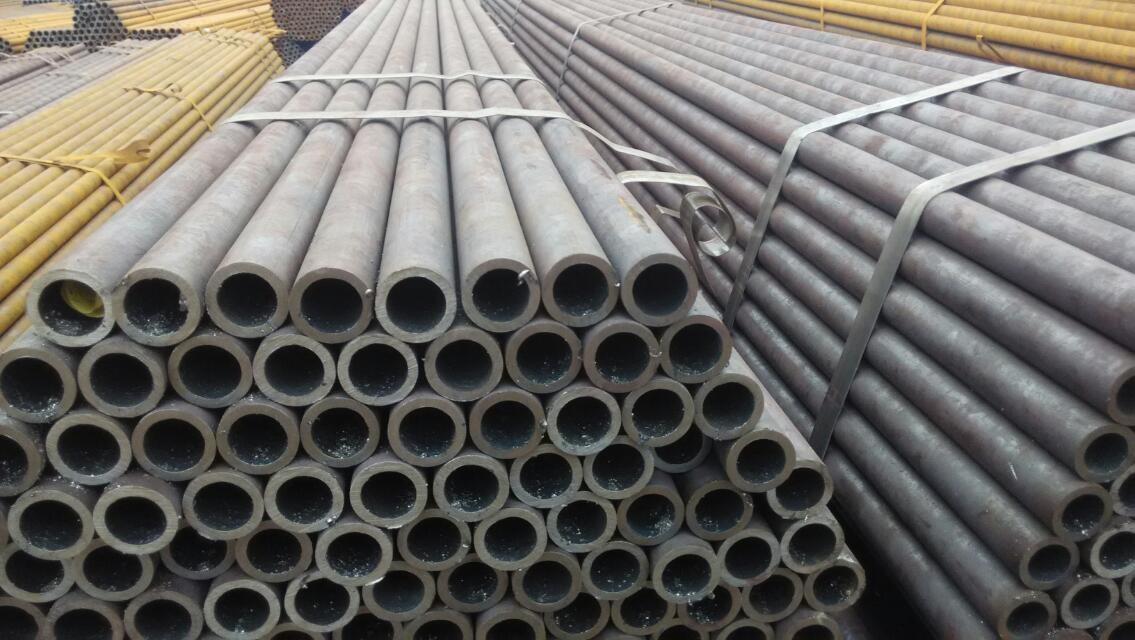Spatter is the metal that flies out of the molten pool during the welding process of seamless pipes. Splashes are easy to scratch seamless pipes, pollute the protective glasses of welding helmets, pollute the filters and frosted glass of equipment cameras, etc.
The influence of seamless pipe welding spatter:
1. Reduce welding deposition efficiency and reduce welding productivity;
2. The spatter is easy to adhere to the weldment and the nozzle, which will affect the welding quality, make the welding working conditions worse and increase the cleaning time;
3. The welding molten pool is unstable, resulting in defects such as rough weld shape.

Measures against splashing
1. In arc welding of seamless pipes, there is a certain rule between the spatter rate and welding current of each diameter of welding wire. The spatter rate in the small current area is small, and the spatter rate in the high current area is also small, while the splash rate in the middle area is large. Therefore, when selecting the welding current, the current area with high spatter rate should be avoided as much as possible.
2. The protruding length of the welding wire should be shortened as much as possible, which can more effectively reduce gg welding spatter.
3. When the gas shielded welding machine adopts positive polarity, because the arc is affected by the pressure of the anode spot, the spatter increases sharply and the particles are large, so the DC reverse polarity connection method is generally used.
4. A large inductance is connected in series in the welding circuit. When the medium current standard gas shielded welding is used, because the arc length is short, and the molten droplet and the molten pool are constantly moving, the molten droplet and the molten pool are very prone to short circuit. Therefore, in addition to the large drop-like repulsion transition in gas shielded welding, there is also a part of the droplet that is short-circuit transition. A larger inductance is connected in series in the welding circuit to make the short-circuit current rise slower, which can properly reduce steel pipe welding spatter.
5. There is less spatter when the welding torch welds the seamless pipe vertically, and the larger the inclination angle, the more spatter. It has been proved by practice that the forward or backward tilt of the welding torch should not exceed 20°, and the maximum should not exceed 25°.
The influence of seamless pipe welding spatter:
1. Reduce welding deposition efficiency and reduce welding productivity;
2. The spatter is easy to adhere to the weldment and the nozzle, which will affect the welding quality, make the welding working conditions worse and increase the cleaning time;
3. The welding molten pool is unstable, resulting in defects such as rough weld shape.

Measures against splashing
1. In arc welding of seamless pipes, there is a certain rule between the spatter rate and welding current of each diameter of welding wire. The spatter rate in the small current area is small, and the spatter rate in the high current area is also small, while the splash rate in the middle area is large. Therefore, when selecting the welding current, the current area with high spatter rate should be avoided as much as possible.
2. The protruding length of the welding wire should be shortened as much as possible, which can more effectively reduce gg welding spatter.
3. When the gas shielded welding machine adopts positive polarity, because the arc is affected by the pressure of the anode spot, the spatter increases sharply and the particles are large, so the DC reverse polarity connection method is generally used.
4. A large inductance is connected in series in the welding circuit. When the medium current standard gas shielded welding is used, because the arc length is short, and the molten droplet and the molten pool are constantly moving, the molten droplet and the molten pool are very prone to short circuit. Therefore, in addition to the large drop-like repulsion transition in gas shielded welding, there is also a part of the droplet that is short-circuit transition. A larger inductance is connected in series in the welding circuit to make the short-circuit current rise slower, which can properly reduce steel pipe welding spatter.
5. There is less spatter when the welding torch welds the seamless pipe vertically, and the larger the inclination angle, the more spatter. It has been proved by practice that the forward or backward tilt of the welding torch should not exceed 20°, and the maximum should not exceed 25°.









